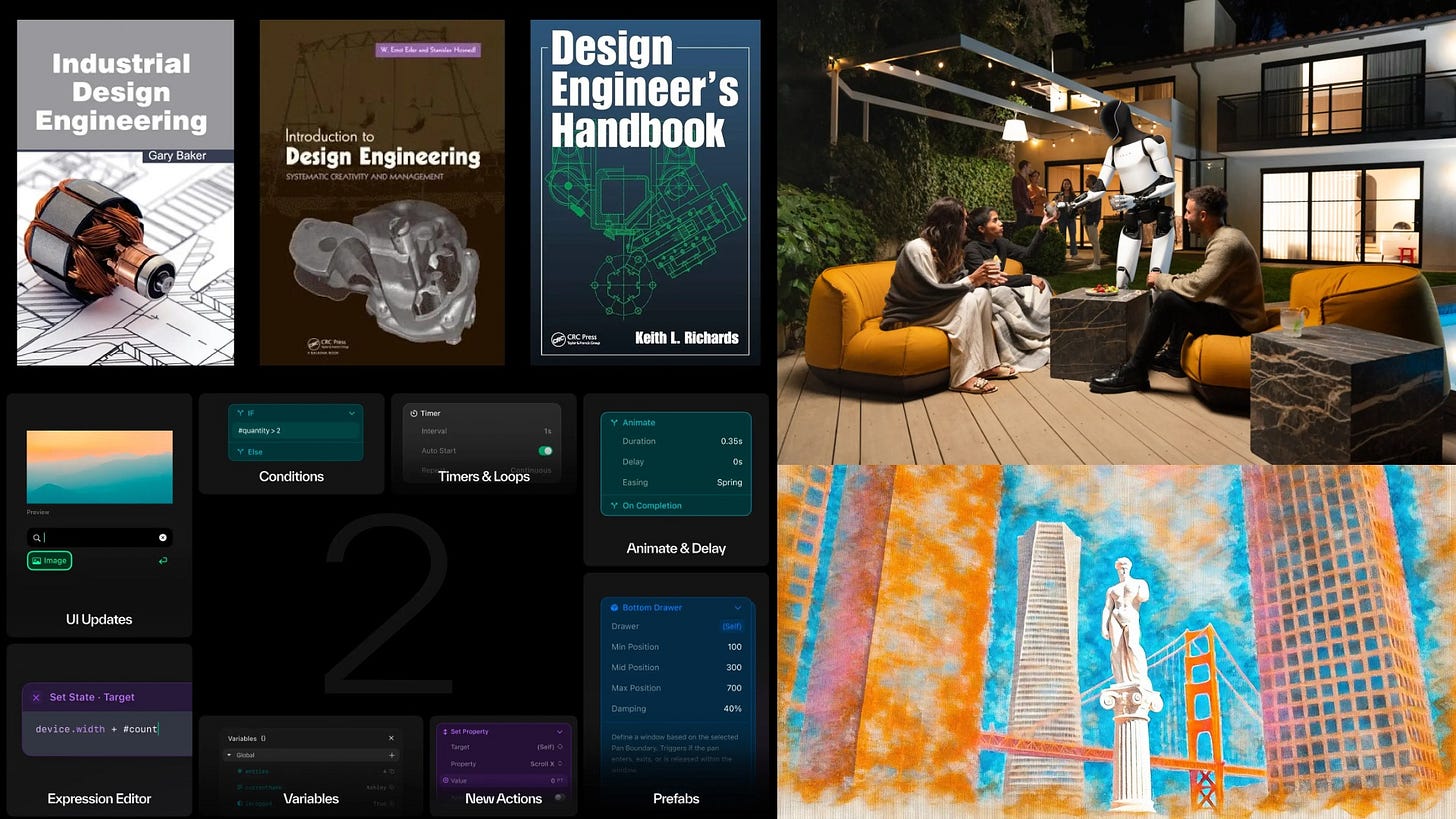Issue 121
The already-here secret design engineers
Hello, dear readers! 👋
In this issue, among other things:
Who are design engineers and what do they do
How design and aesthetics have become a new driving force in the world of technology
Why you need to be a multidisciplinary specialist today
How to test icons for recognizability, image readability and other parameters
Why you need to prototype with code and how to do it with AI
A powerful new tool for creating 3D characters
Prompt manager for testing and storing hints
3 reasons not to use modular grids
…and much more!
Enjoy reading!
🗞 News and articles
The future of creative work: Why creative generalists are the architects of tomorrow
Readymag wrote about why the modern creative environment is dominated by multidisciplinary rather than narrow specialists.
Main thoughts:
The development of the Internet has broken the monopoly of traditional media and opened up limitless opportunities for creative expression. The new information field is overloaded with content
Modern creators need to put more effort into standing out in a dense information space. To do this, you have to work at the intersection of disciplines, developing your blogs, podcasts and other projects
A large number of people have switched to freelance and project work. This mode requires versatility and the ability to adapt to constant changes
Thinking at the intersection of disciplines helps to create interesting and innovative projects
The demand for multidisciplinary specialists (generalists) is only growing
The 80/20 rule in design job interviews
Matej Latin explained why case study is the most important stage in an interview, on which success depends. At this stage, the designer should talk about his work using slides and explain what he did, why and what happened as a result.
According to the Pareto rule, Matei suggests spending 80% of the effort on preparing and presenting his case, and 20% on all other issues. The article contains tips on selecting cases, creating slides themselves, and preparing answers to additional questions.
The main thoughts:
When preparing, it is worth choosing a case relevant to the company and its requirements in order to maximize the interest of the interviewers
In slide design, 80% of the content should be visual elements, and 20% should be text
The story should be interesting. It should show how you coped with the problem and achieved results.
Make sure you can explain why you chose certain methods and tools in your project.
Before the interview, rehearse your presentation, write yourself down and correct mistakes. It is very important to express thoughts succinctly and quickly
During the presentation, it is important to monitor the reaction of the interviewers and adapt your presentation and speech to keep them interested.
Prepare examples that show your ability to work in a team and communicate with colleagues
Mehmet Baytas wrote about design engineers - versatile specialists who combine the skills of both a designer and a developer. They can design the design themselves and bring it to a working prototype by writing code.
He told us what the advantages of such professionals are, what tasks they perform and how to start studying in this direction. At the end of the article, Mehmet shared links to English-language courses and books for learning.
What do design engineers do?:
Creating marketing websites with complex animations, 3D graphics, games and other impressive effects
Product quality control at all levels — from the design system to user research and development
Development of new promising concepts and innovations
Launching your own new products
Taste is Eating Silicon Valley
Anu Atluru wrote about how design and aesthetics have become a new driving force in the world of technology, changing the previous focus on functionality.
Using the example of Apple and Tesla, Anu shows that today it is not enough to simply create a good product to achieve success. It is also important to take into account its cultural resonance and aesthetics.
The main thoughts:
Software has become widespread and accessible, so now it is more important how it is served and perceived
Startups should not only develop technological innovations, but also take into account cultural trends in order to stand out from the competition
Modern companies such as Apple and Tesla are already successfully combining technology and cultural resonance, making taste and aesthetics part of their strategy
The influence of aesthetics and design extends to all areas, including B2B and B2C
Investors are looking for startups that can combine innovation and aesthetics. They are betting on founders who are capable of becoming leaders in this new era.
Keep reading with a 7-day free trial
Subscribe to bezier.design to keep reading this post and get 7 days of free access to the full post archives.







